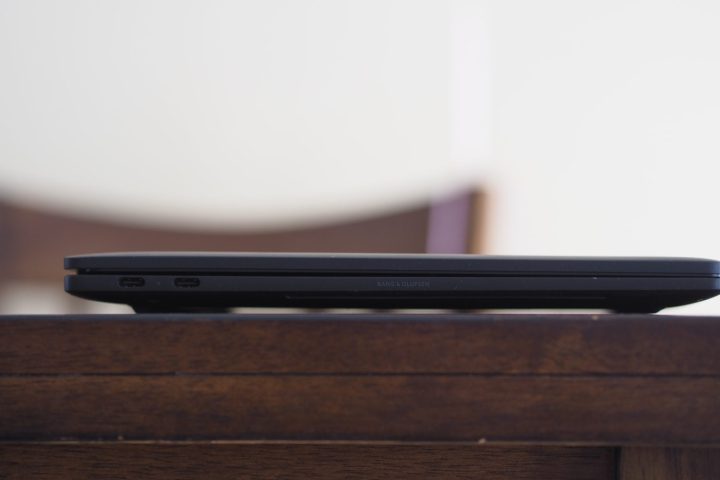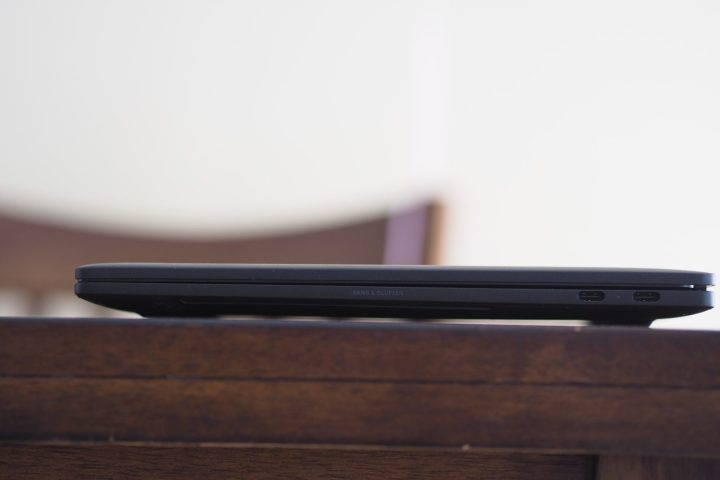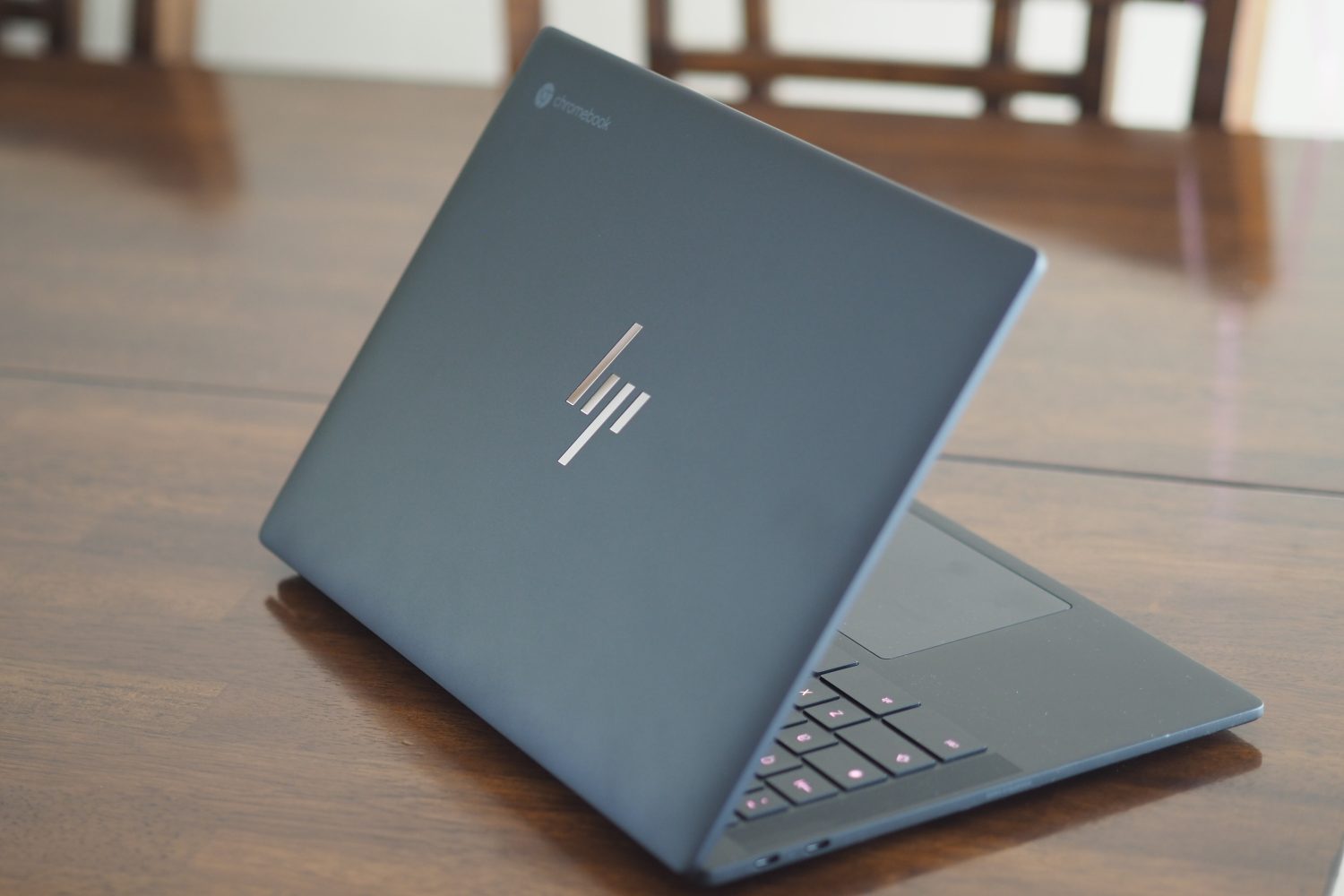
HP Dragonfly Pro
MSRP $999.00
“With muscle to spare and on-demand support, the HP Dragonfly Pro proves Chromebooks are ready to work.”
Pros
- Extremely fast ChromeOS performance
- Excellent, bright display
- Good keyboard and superior haptic touchpad
- Solid build quality
- Convenient live support
Cons
- Expensive
- Below average battery life
HP’s new Dragonfly Pro laptops come in two versions: one runs Windows 11, and one runs ChromeOS. Both are aimed at freelancers or other small business users who need a quality laptop with modern features and live 24/7 support. Today we’re reviewing the ChromeOS flavor, but I’ll review the Windows 11 version later.
The ability to contact technical support directly on the laptop to work out issues is a new feature that immediately differentiates the Dragonfly Pro line from most other laptops. Fortunately, HP doesn’t rely on that alone to make it an alluring premium Chromebook offering.
Specs and configurations
| HP Dragonfly Pro Chromebook | |
| Dimensions | 12.4 inches x 8.7 inches x 0.7 inches |
| Weight | 3.33 pounds |
| Processor | Intel Core i5-1235U |
| Graphics | Intel Iris Xe |
| RAM | 16GB |
| Display | 14.0-inch 16:10 QHD+ (2,560 x 1,600) |
| Storage | 256GB PCIe SSD |
| Touch | Yes |
| Ports | 4 x USB-C with Thunderbolt 4 |
| Wireless | Wi-Fi 6E and Bluetooth 5.3 |
| Webcam | 8MP |
| Operating system | ChromeOS |
| Battery | Up to 11.5 hours |
| Price | $999 |
There’s only one configuration of the Dragonfly Pro Chromebook, priced at $999 for a Core i5-1235U, 16GB of RAM, and a 256GB PCIe SSD. It can be ordered in either black or white. That makes it an expensive Chromebook, but less than HP’s other enterprise-oriented versions.
Top-tier Chromebook design

The Dragonfly Pro Chromebook’s lid opens smoothly with one hand, yet still has enough friction to hold the display firmly in place. The aluminum chassis is solid as a rock, while the lid demonstrates zero bending no matter how hard you try. This Chromebook is built as well as the best Windows and Apple premium laptops like the Dell XPS 13 Plus and the Apple MacBook Pro 14, something you don’t find that often. Notably, HP’s previous best Chromebook, the Elite Dragonfly Chromebook, wasn’t as solid.
It’s a simplistic design, all-black or all-white, with just a silver HP logo on the lid and speaker grills to each side of the keyboard adding some flair. Minimalism is the trend lately in laptop aesthetics, but that doesn’t mean the Dragonfly Pro Chromebook is unattractive. It’s not. It’s actually quite fetching, with just the right combination of lines and angles to give it a sleek look. The top and bottom display bezels aren’t the tiniest you’ll find, but when open, it still maintains a modern look.
The Dragonfly Pro Chromebook isn’t the thinnest or lightest laptop around, at 0.70 inches and 3.33 pounds, but it’s still highly portable. The Acer Chromebook Spin 513 is thinner at 0.64 inches and lighter at 2.83 pounds, but the difference isn’t significant. In comparison, the highly sustainable all-plastic Acer Chromebook Vero 514 weighs a little less at 3.09 pounds but is thicker at 0.80 inches. Neither of these laptops is as solid as the HP.
The keyboard is well-planned, following the usual ChromeOS layout, and has large, comfortable keycaps and plenty of key spacing. The switches are light, with a snappy feel that could benefit from more pressure. It’s not quite up to the standards of the HP Spectre keyboards, but it’s close and good enough for long typing sessions.

The touchpad is haptic, and as such supports “clicking” across the entire surface. It’s very precise and the haptic feedback is excellent, providing the feel of solid physical buttons without the noise. I’d rate it as one of the best touchpads you’ll find on a Chromebook, and it’s also nicely sized for a 14-inch laptop in general. In my experience, it’s better than the haptic touchpad in the Dell XPS 13 Plus.
Connectivity is limited to four Thunderbolt 4 ports, and while that’s impressive in terms of modern connectivity, that’s all you get. You’ll need some dongles for legacy devices. HP also opted to leave out an audio jack, following a trend that I dislike quite a bit, but that’s unsurprising given that the smartphone industry has gone in this direction as well, and some other notebook makers are following suit.
Help when you need it
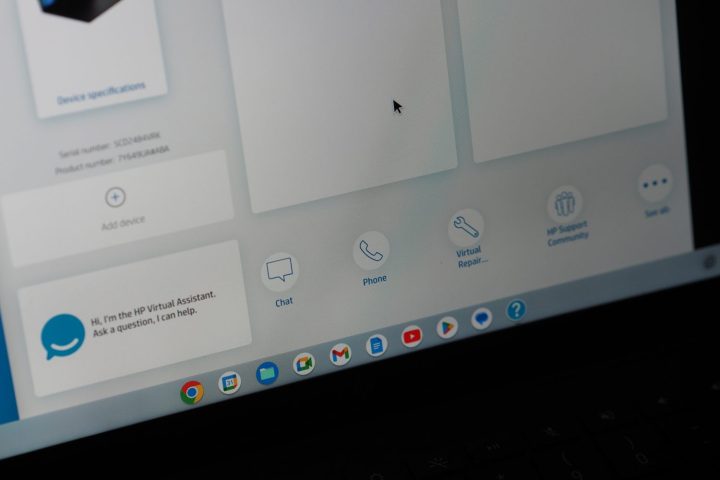
HP’s new 24/7 Pro Live Support service provides either chat or phone support with a live agent. It’s free for the first year of ownership, and then $11 monthly for up to 36 months. Once you’ve established an HP account, you can simply click the support agent link in the HP Support Assistant app, select your specific laptop, and get support without the usual muss or fuss.
I had a question about how to turn on the RGB keyboard lighting, and so I used the service to get an answer. The process was simple and direct, and I had the instructions within five minutes of starting the chat. By the way, the process of turning on the backlighting is easy. Press and hold on the home screen, select Set wallpaper & style, and then the keyboard options will be toward the bottom. You can select no backlighting, white, a specified other color, or a rainbow effect.
This is a great service for anyone without an IT department who still wants someone in their corner to help resolve tech issues. While I didn’t fully test the service, I got enough of a feel to know that it’s a solid addition, and well worth consideration for the right customer.
Among the fastest Chromebooks

As we always point out in our Chromebook reviews, ChromeOS doesn’t require nearly the resources of Windows 11 or MacOS. It’s a lightweight operating system built largely on web technologies, and as such, can get away with lesser components. The Dragonfly Pro Chromebooks use a 12th-gen Core i5-1235U, a 15-watt 10-core (two Performance and eight Efficient), 12-thread CPU running at a max Turbo Frequency of 4.4GHz. It’s a midrange CPU for Windows 11 machines but a high-end processor for ChromeOS.
Toss in the 16GB of RAM, a lot for a Chromebook, and the Dragonfly Pro Chromebook is among the speediest ChromeOS laptops we’ve reviewed. It’s the fastest we’ve tested in Geekbench 5 multi-core mode, and it took first place in the web-based Speedometer 2.0 test. I pushed the laptop hard, opening multiple tabs and running several Android apps in the background, and I suffered no slowdowns. Even Android games played well thanks to the Intel Iris Xe graphics (not that they were all comfortable to play in a clamshell). Asphalt 9 is my go-to test, and it was smooth and stutter-free.
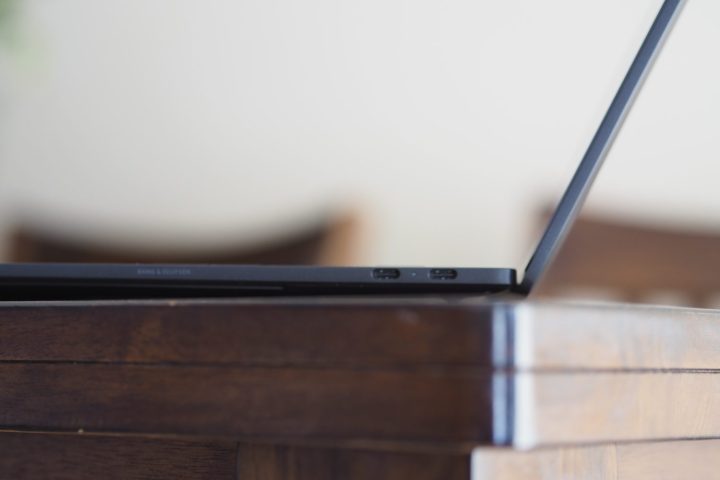
Ultimately, you’ll find the Dragonfly Pro Chromebook to meet your most demanding workflows. There’s nothing ChromeOS can throw at the laptop that it can’t handle.
| Geekbench (single / multi) |
Speedometer 2.0 | |
| HP Dragonfly Pro Chromebook (Core i5-1235U) |
1,424 / 5,830 | 237 |
| Acer Chromeboook Ver0 514 (Core i5-1235U) |
1,437 / 4,909 | 201 |
| HP Elite Dragonfly Chromebook (Core i5-1245U) |
1,394 / 4,055 | 206 |
| Acer Chromebook Spin 513 (MediaTek Kompanio 1380) |
936 / 3,438 | 76 |
| HP Chromebook x360 14c (Core i3-1125G4) |
898 / 2,866 | N/A |
| HP Chromebook x2 11 (Qualcomm Snapdragon 7c) |
590 / 1,689 | 45 |
| Asus Chromebook Flip CX5 (Core i5-1135G7) |
1,190 / 4,151 | 163 |
Battery life was less than the other Intel Core Chromebooks in our comparison group, and also less than most of the ARM-based Chromebooks. If your ChromeOS workflow is at all demanding, you’re unlikely to get a full day of work out of the machine.
| Web browsing | Video | |
| HP Dragonfly Pro Chromebook (Core i5-1235U) |
7 hours, 17 minutes | 11 hours, 8 minutes |
| Acer Chromebook Vero 514 (Core i5-1235U) |
8 hours, 51 minutes | 12 hours, 36 minutes |
| HP Elite Dragonfly Chromebook (Core i5-1245U) |
7 hours, 59 minutes | 9 hours, 13 minutes |
| Acer Chromebook Spin 513 (MediaTek Kompanio 1380) |
11 hours, 7 minutes | 12 hours, 42 minutes |
| HP Chromebook x360 14c (Core i3-1125G4) |
7 hours, 44 minutes | 8 hours, 2 minutes |
| HP Chromebook x2 11 (Qualcomm Snapdragon 7c) |
12 hours, 42 minutes | 10 hours, 59 minutes |
| Asus Chromebook Flip CX5 (Core i5-1135G7) |
9 hours, 25 minutes | 8 hours, 50 minutes |
A very bright, high-res display

The Dragonfly Pro Chromebook boasts a 14.0-inch 16:10 IPS display at 2560 x 1600, which is a sharp resolution for the display size. HP boasts up to 1,200 nits of brightness, which I can’t test because my colorimeter doesn’t support ChromeOS.
However, I found the display extremely pleasant to use during my testing. I don’t need such high brightness, but if I were to work in areas with a lot of ambient lighting (or outside), then certainly, that would come in handy. Colors were bright and natural, and blacks were true without fading to grey. It’s a great display for productivity or creative work and should please most users.
Audio was impressive, with tons of volume that completely filled my home office. There was no distortion at full volume, with clear mids and highs and a touch of bass. That’s thanks to four speakers, one on each side of the keyboard and two downward-firing. I wouldn’t need a pair of headphones or external speakers for streaming video or music, and overall I’d rate audio quality as a strength.
The webcam is an 8MP version, a first for a Chromebook, and it provides a clear, crisp image. HP worked closely with Google to optimize video quality in different lighting conditions, and videoconferencers will be pleased with the results.
A truly modern Chromebook that elevates the platform
The Dragonfly Pro Chromebook is incredibly fast, built as well as the best laptops around, and has several features that bring it in line with its Windows competitors. Not many ChromeOS machines have haptic touchpads and Thunderbolt 4, not to mention live 24/7 technical support that’s so easily accessible.
It’s expensive at $999, but it’s one of the best Chromebooks around and raises the platform to compete with Windows 11 and MacOS more directly. It’s still ChromeOS, so if that doesn’t work for you, then this isn’t your machine. But if you’re looking for a quality Chromebook that doesn’t compromise, the Dragonfly Pro Chromebook qualifies.
Editors’ Recommendations


